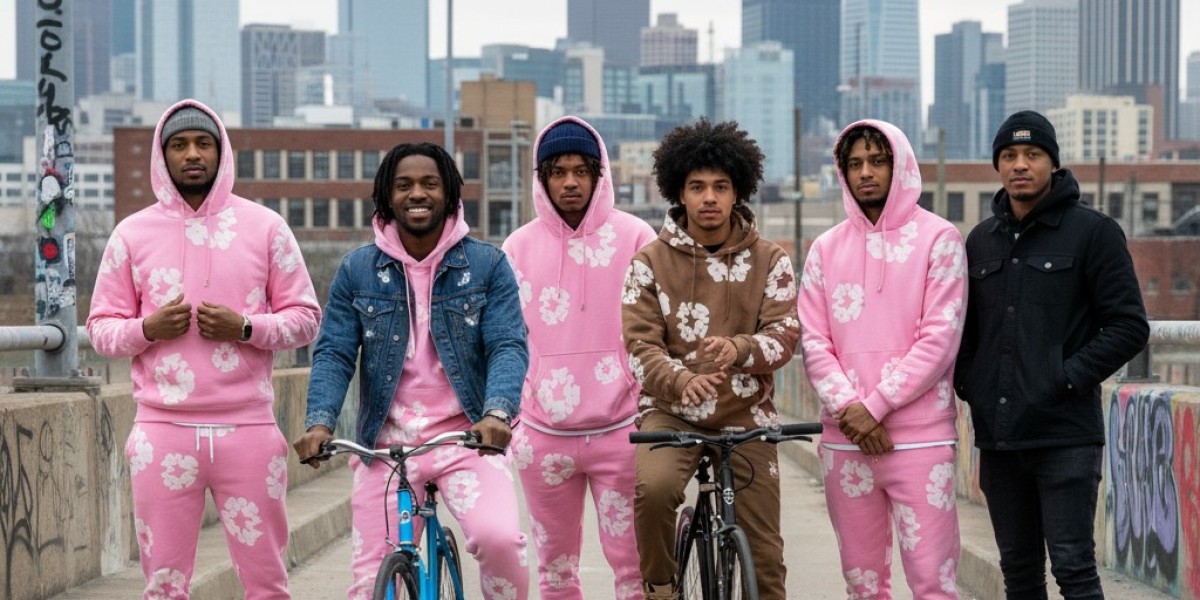Few modern brands have resonated with young people as profoundly as Denim Tears. Founded by Tremaine Emory in 2019, the label represents far more than fashion — it’s a cultural movement rooted in history, identity, and artistic expression. While most streetwear brands chase trends or hype cycles, Denim Tears takes a different approach. It tells stories — stories of Black history, resilience, and creativity — through the language of denim tears cotton, and art.In an era where youth culture is defined by self-expression, social consciousness, and digital influence, Denim Tears has emerged as a symbol of awareness and authenticity. Its impact extends beyond aesthetics, shaping how young people think about clothing, heritage, and the power of fashion as a medium for truth.This essay explores the multifaceted impact of Denim Tears on youth culture, from its design philosophy and symbolism to its influence on music, art, and social identity.
1. The Birth of a Cultural Movement
Tremaine Emory, also known as “The Denim Tears” or “The Brand Director”, launched Denim Tears as both a fashion label and a historical dialogue. After years of working with influential brands and artists such as Kanye West, Virgil Abloh, and Supreme, Emory sought to create something deeply personal — a brand that used fashion to discuss the Black experience in America.
The brand’s most recognizable design, the cotton wreath embroidery on Levi’s denim, references the history of slavery and the cotton fields of the American South. But it also reclaims that symbol — transforming a painful past into a powerful emblem of endurance and beauty.
For young people, this message is revolutionary. Denim Tears isn’t about luxury logos or seasonal drops; it’s about storytelling and consciousness. It empowers youth to wear history proudly and to see fashion as a platform for education, emotion, and change.
2. Redefining Streetwear: From Trend to Truth
Youth culture has long been intertwined with streetwear, but Denim Tears elevates the genre by infusing it with historical and cultural meaning. While brands like Supreme and Off-White popularized the aesthetics of street fashion, Denim Tears focuses on its purpose.
Every collection from Denim Tears serves as a narrative chapter — a visual essay that connects fashion with social commentary. Whether referencing Marcus Garvey, W.E.B. Du Bois, or the Civil Rights Movement, Emory uses apparel as a tool to bridge generations.
For young consumers — especially those navigating questions of identity and belonging — this is deeply powerful. Denim Tears shows that fashion doesn’t have to be shallow or trend-driven. Instead, it can be a form of activism, an extension of self-awareness, and a celebration of cultural pride.
By doing so, the brand has redefined what it means to participate in streetwear: it’s no longer just about style; it’s about having something to say.
3. The Power of Symbolism: Cotton, Denim, and Storytelling
One of Denim Tears’ most impactful contributions to youth culture lies in its symbolism. The brand’s choice of denim — a material historically associated with labor and workwear — and cotton — a reference to slavery and systemic oppression — transforms everyday fabrics into vessels of memory.
By repurposing these materials, Emory encourages younger generations to confront history through fashion. A simple pair of Denim Tears jeans becomes a conversation starter, challenging wearers and onlookers to think about the origins of American wealth, the exploitation of Black labor, and the endurance of culture through art.
This form of storytelling resonates deeply with youth because it aligns with how they engage with the world — through visuals, symbols, and narrative-driven expression. In an era defined by social media, where imagery can ignite movements, Denim Tears leverages fashion’s visual power to educate and inspire.
4. Bridging Fashion and Activism
Denim Tears stands at the intersection of art, activism, and fashion — a balance that deeply influences today’s socially conscious youth. Emory’s work often coincides with significant cultural moments, amplifying its relevance.
For instance, during the height of the Black Lives Matter movement, Denim Tears’ imagery — especially its cotton wreath — became a visual statement of solidarity. The brand encouraged wearers to reflect, not just react. This ability to combine emotion and education makes Denim Tears more than clothing; it’s a wearable protest, a dialogue between past and present.
Young people, who are increasingly aware of issues like systemic racism, sustainability, and cultural appropriation, find in Denim Tears a brand that mirrors their values. By blending art with activism, it gives them a way to participate in change through what they wear.
5. The Influence of Collaboration and Community
A key aspect of Denim Tears’ success lies in its collaborations — not as marketing tools, but as cultural exchanges. Partnerships with Levi’s, Converse, Dior, and Champion have brought the brand’s messages to broader audiences without diluting their meaning.
These collaborations help bridge high fashion and grassroots culture, making Denim Tears accessible yet aspirational. For example, the Denim Tears × Converse Chuck 70s — adorned with the cotton wreath — became instant icons, blending historical storytelling with classic streetwear aesthetics.
Beyond commercial partnerships, Denim Tears thrives on community engagement. Tremaine Emory often collaborates with artists, musicians, and activists, creating spaces where fashion intersects with dialogue. This community-driven approach has inspired many young creatives to see collaboration not as competition but as collective empowerment.
6. Influence on Music and Visual Culture
Denim Tears’ impact extends far beyond fashion — it has become embedded in the worlds of music and visual arts, two cornerstones of youth culture. Artists such as Tyler, The Creator, Frank Ocean, A$AP Rocky, and Kendrick Lamar have been seen wearing Denim Tears, using it as both style and statement.
These artists, known for their introspective storytelling, align naturally with the brand’s ethos. When fans see their idols wearing Denim Tears, it reinforces the message that fashion can carry meaning — that style can coexist with social reflection.
On social media, Denim Tears pieces often go viral not just because they look good, but because they spark dialogue. Each drop or photoshoot invites conversation about race, identity, and artistry, fostering a new generation of youth who think critically about what they wear and why.
7. Representation and Empowerment
One of Denim Tears’ most profound impacts is its role in representation. In an industry historically dominated by Eurocentric ideals, Denim Tears places Black identity and craftsmanship at the forefront.
For young Black creatives and consumers, seeing a brand unapologetically rooted in African-American heritage is affirming. It shows that fashion can be both successful and culturally grounded. This empowerment extends beyond race — it inspires all youth to embrace authenticity and to see their personal stories as valuable sources of creativity.
By combining global visibility with cultural specificity, Denim Tears proves that representation isn’t about exclusion — it’s about expanding the narrative of who belongs in fashion.
8. Shaping the Future of Conscious Fashion
Denim Tears represents a turning point in how youth engage with brands. The new generation of consumers seeks substance over hype, wanting brands that align with their beliefs and contribute to social progress.
Through its emphasis on education, art, and activism, Denim Tears has set a new standard for what modern streetwear can be. It challenges other brands to move beyond superficiality and embrace purpose-driven creativity.
For young designers and thinkers, Emory’s work serves as a blueprint — proof that storytelling, community, and ethics can coexist with commercial success.
9. Legacy and the Evolution of Youth Expression
Ultimately, Denim Tears’ impact on youth culture lies in how Denim Tears Hoodie it has expanded the meaning of expression itself. It invites young people to wear their beliefs, to use fashion not as armor but as dialogue.In doing so, the brand has become a symbol of self-awareness and solidarity, showing that cultural consciousness and creativity can thrive together. Denim Tears encourages youth not just to consume fashion but to participate in it — to see each garment as a chance to reflect, question, and connect.The result is a generation that doesn’t just follow trends but creates movements.
Conclusion: More Than a Brand — A Cultural Awakening
Denim Tears has transformed youth fashion into something deeper — a conversation about history, identity, and the future. It represents the bridge between art and activism, between pain and beauty, between memory and modernity.For today’s youth, Denim Tears is more than a logo or a pair of jeans; it’s a philosophy of awareness. It encourages individuality while fostering unity, reminding young people that their voices — and their style — have the power to shape culture.







